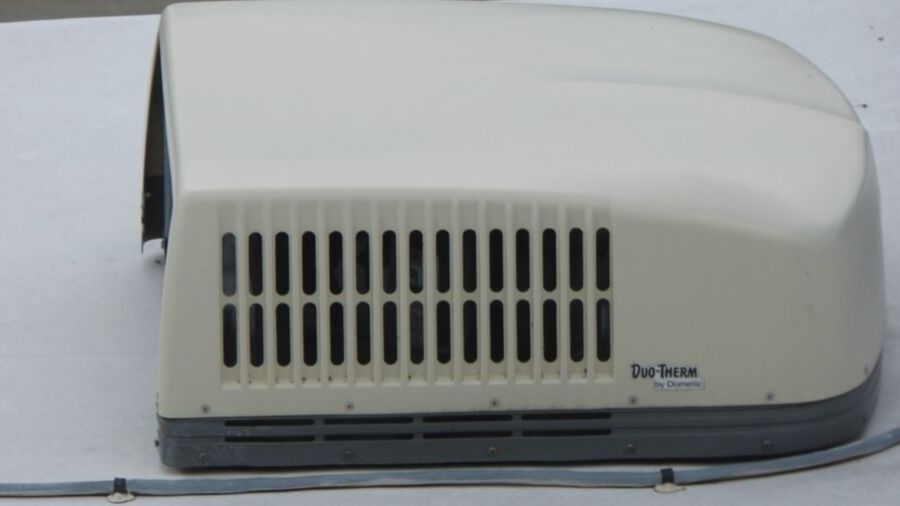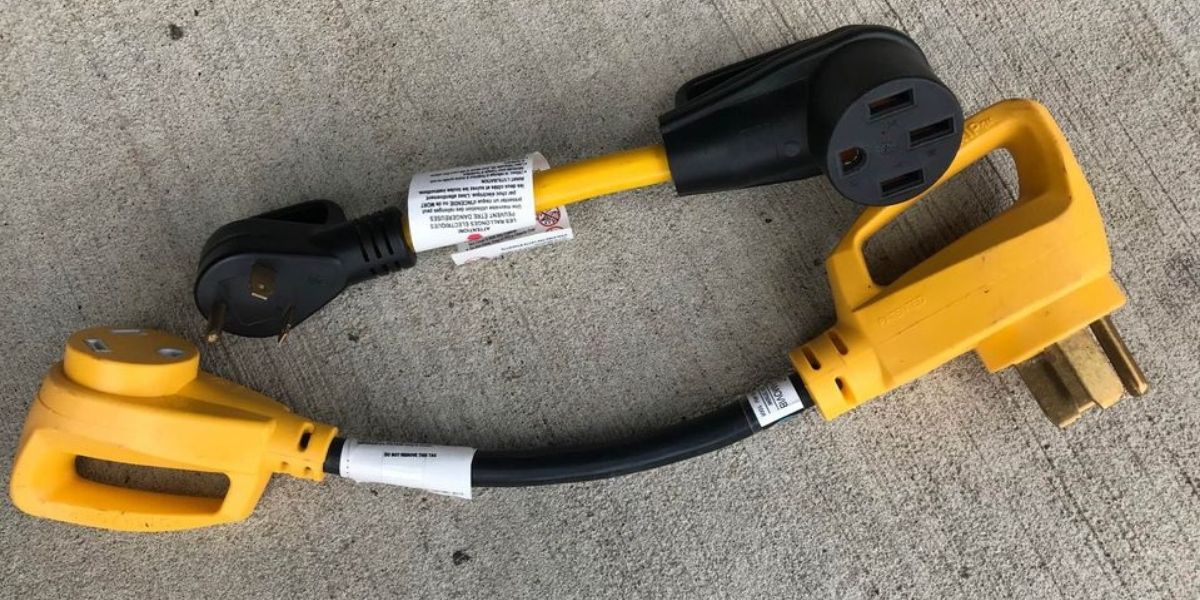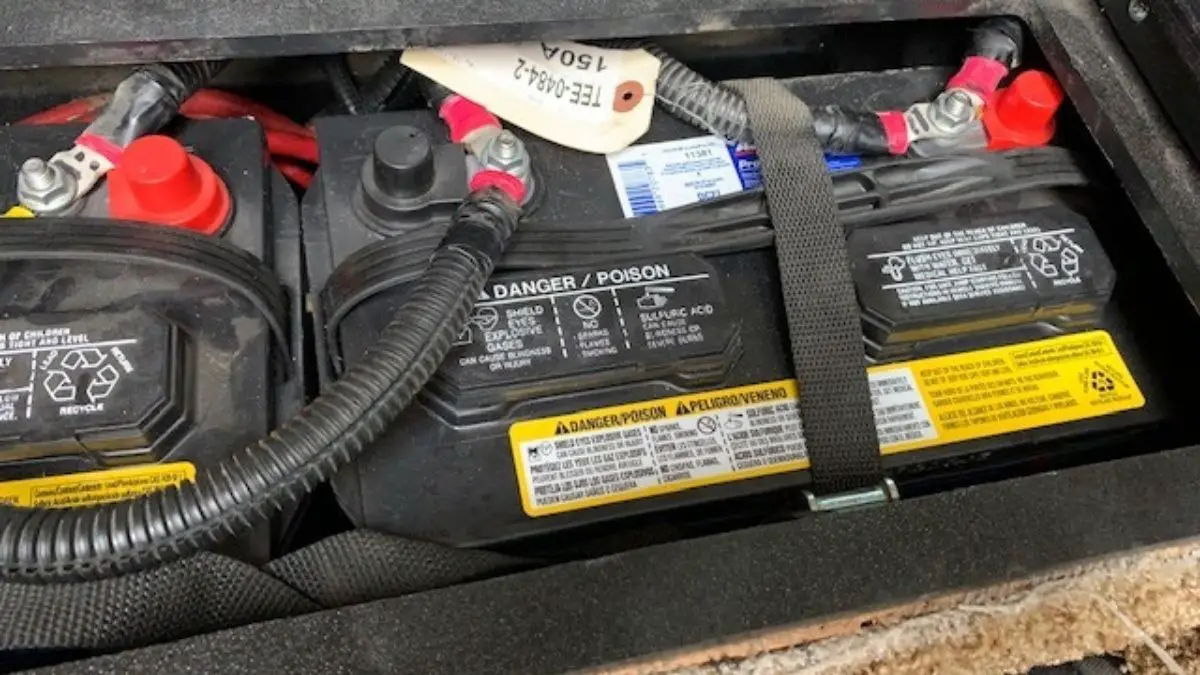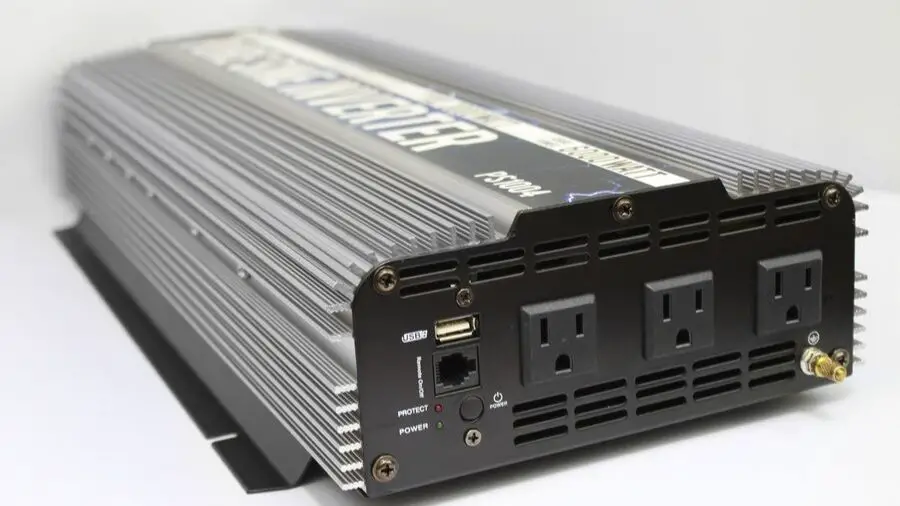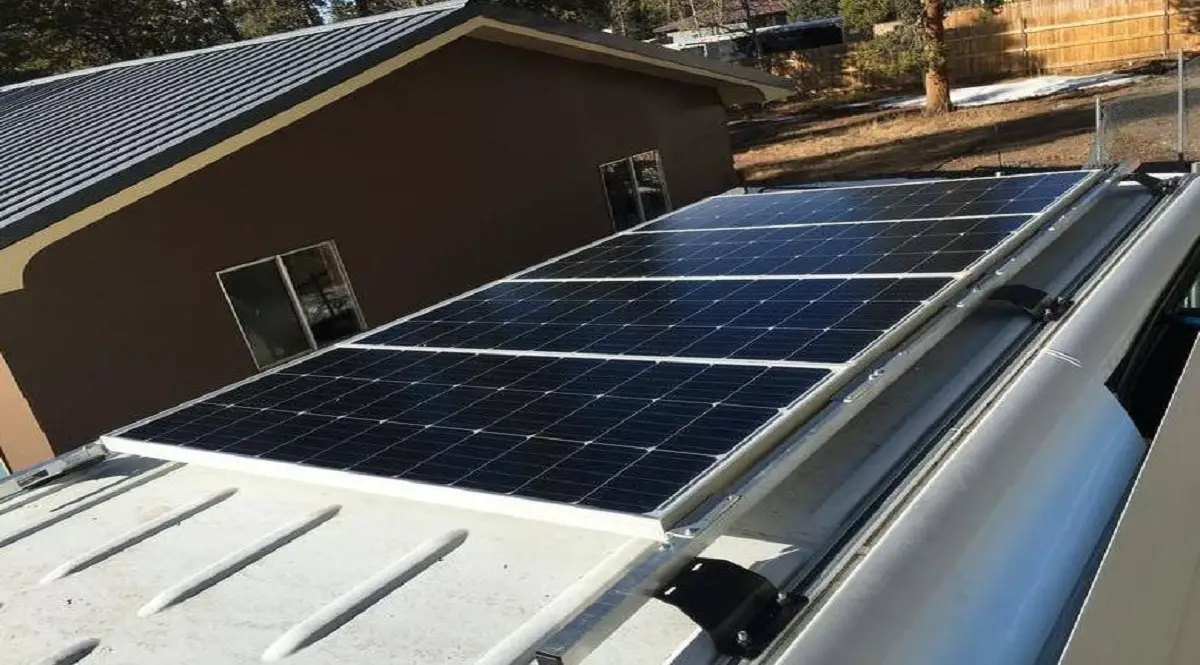Plugging in a 50-amp camper to a 30-amp power source will not harm anything if you do not try to operate all your appliances such as your Air conditioners, hot water system, refrigerator on AC power. Running some items such as Air conditioner units on low amperages can damage the motor. Some appliances will have to run off propane, such as the Refrigerator and hot water system.
An adaptor will be required for your RV’s 50 amp plug to go to a 30-amp plug on the pedestal.
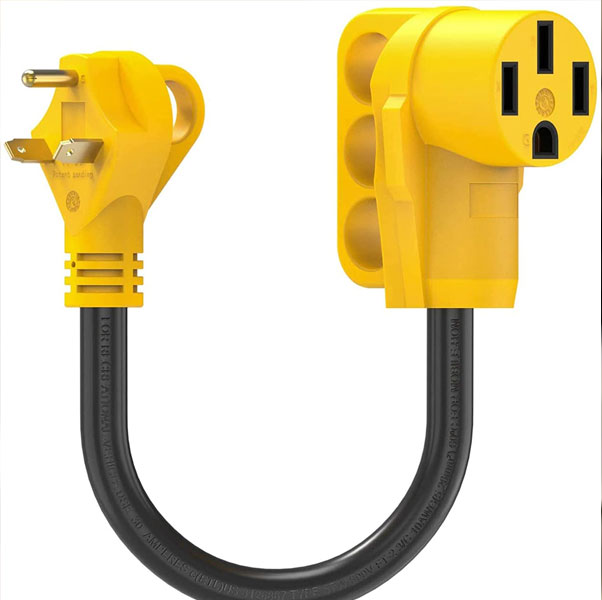
What Happens When You Plug In Your 50 Amp RV Into A 30 Amp Service?
When your 50 Amp RV plugs into a 30 Amp service using a 30 Amp male (M) to 50 Amp female (F) plug adapter, your RV will relatively be only getting 30 Amps of power instead of the 50 Amps that it needs. This means you have to be very mindful of how much power you’ll be using onboard your 50 Amp RV. From knowing exactly which appliances draw more power during use (e.g. microwave, hairdryer), to those that need consistent power (e.g. RV refrigerator, heater or AC). You may even need to switch off some of the lest critical appliances first to be able to use another one, and/or would have to switch to propane (if any of your appliances have this option) to minimize the energy consumption on your RV.
Now, what initially happens in your 50 Amp RV electrical system when you plug it into a 30 Amp service? Your charger will start up in bulk charge mode, consuming around 12-15 Amps of power. Because your RV is taking in less power than it needs, it will take a few hours for the electrical system to settle in and get used to it.
If you draw more energy in your RV than the 30 Amp service you’re plugged into can offer, you could potentially:
- (1) Trip the circuit breaker on the pedestal (or your RV’s breaker or surge protector
- (2) Damage your appliances &/or electronics due to the substandard power (which could be more expensive in the long term)
Alternatively, you could try using an adapter like the Camco 21050 Heavy Duty PowerGrip Maximizer 45 Amp Adapter that can connect to both the 30 amp and the 15 amp service so you could get 45 amps.
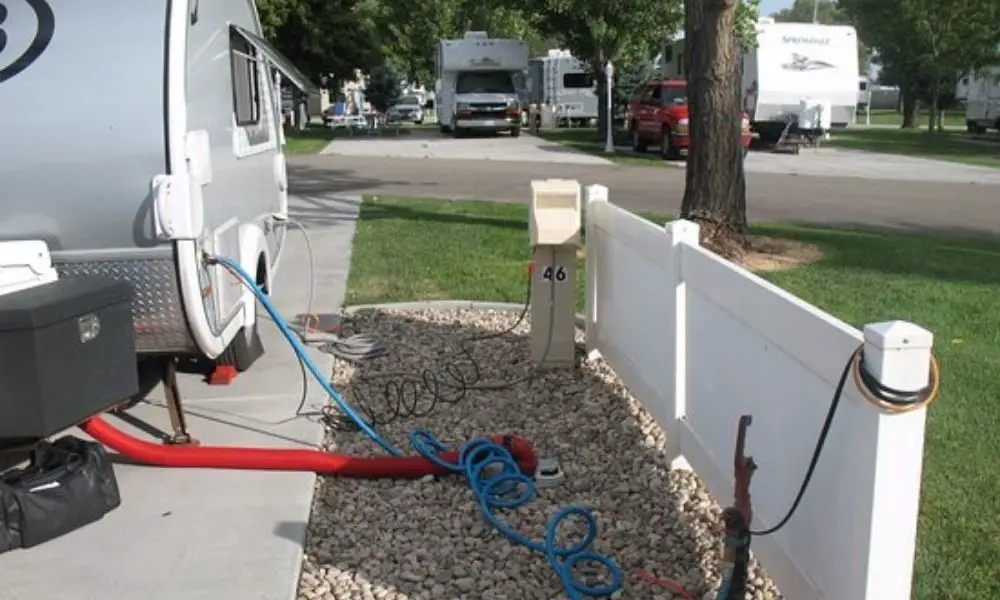
What Is The Difference Between A 30 Amp And A 50 Amp RV Hook Up?
The primary difference between a 30-amp and a 50-amp RV hook up is number of volts that one provides over the other. A 50-amp service provides 3.3 times more volts and watts than a 30-amp service can provide, thus allowing for RV with 50-amps to run 3 times more appliances than a 30-amp Rig. This chart breaks down the details of 30-amp vs 50-amp power.
| Power Type | Prongs | Volts | Watts |
| 30-amp | 3 prongs | 30 amp X 120-volts | 3,600 watts |
| 50-amp | 4 prongs | 2 X 50-amp 120-volt hot wires = 240 volts | 12,000 watts |
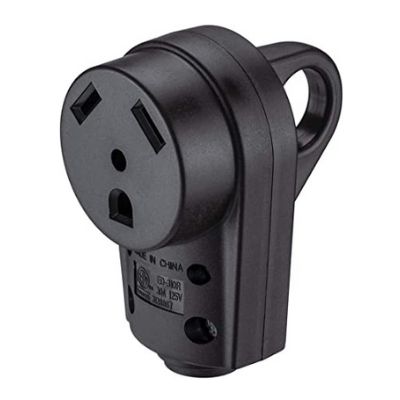
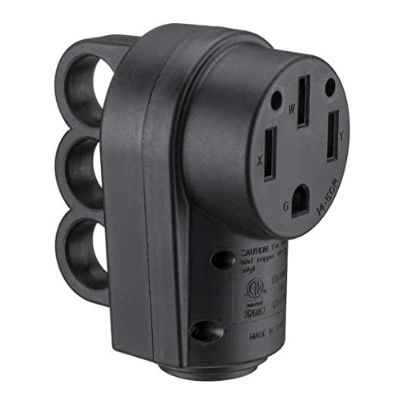
RV’s with 30-amps are typically in smaller and don’t require as much power as a larger rigs, typically there’s one Air conditioner, microwave and power outlets.
Large RV’s with 50-amp AC power supplies are broken down into two 50-amps at 120 volts or also known as a 120 split phase service. This means that the electrical box in the RV is a split to have 50 amps for 2 different parts of your RV. A total of 12,000 watts of power allows for home appliances, multiple air conditioners units and many more appliances that can run on AC power. Here is an example of what a 50-amp box would look like.
| Appliance | 50-amp | 50-amp |
| Air Conditioner 1 | X | |
| Air Conditioner 2 | X | |
| microwave | X | |
| Fridge | X | |
| plugs | X | X |
| Television | X | |
| Washing machine | X | |
| Dryer | X | |
| Electric Water heater | X |
Can I Plug My 30-amp RV Into A 50-amp Service Without Damage?
When you pull your Rig into a camping spot and they only have a 50-amp service, and your RV is only 30 amps. If you have an adaptor to go from 50 amps to 30 amps, your RV shoul be and not suffer any kind of damage. The 50-amp to 30-amp adaptor uses the hots on the 50 amp and the ground so your RV will not draw too many amps and damage your RV. The draw on amps will be on one of the legs of the wire, which is
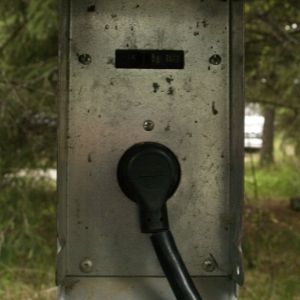
Are 50 amp to 30 amp Adapters Safe?
50-amp male to a 30-amp female adaptor, are safe to plug a 30-amp RV into a 50-am power source. This does NOT cause serious harm to your RV’s electrical system as your RV will only draw the necessary power use. These electrical adaptors follow electrical standards that have been set out for use for the amps.
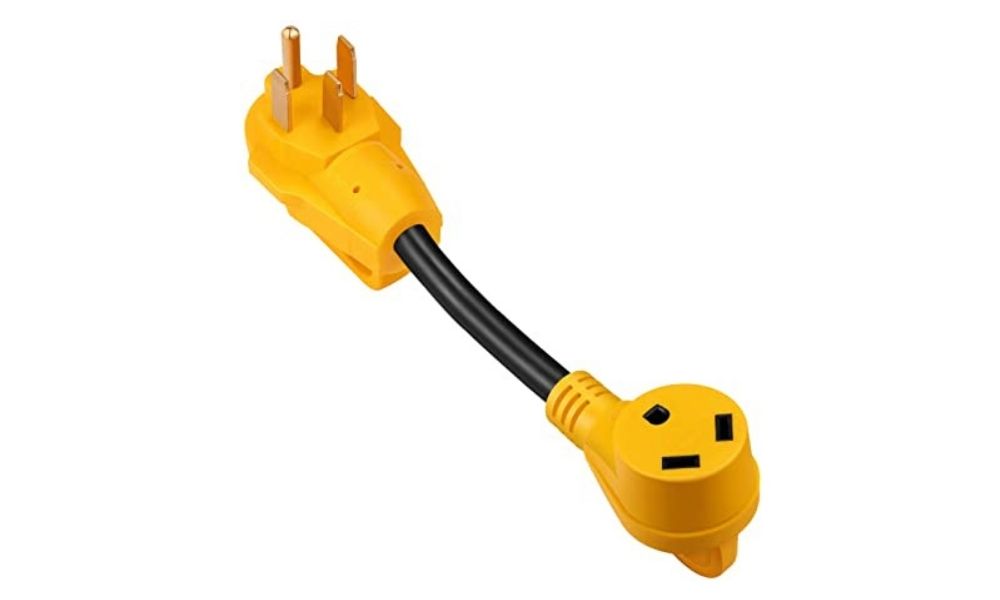
Is There A Difference Between a 30 Amp and A 50 Amp RV Hook-up?
There is a difference between a 30 amp and a 50 amp RV hook-up/service it comes down the is the amount of power it will provide. The 30 amp RV hook-up/service is the most common one available in RV parks, and it supplies around 3,600 watts (you get this by multiplying 30 amps x 120 volts). The 50 amp service on the other hand allows two (2) 50 amp 120v legs – which means that it actually offers 100 useable amps. Some RV park pedestals offer also a 15 or 20 amp service (which is similar to your outlets at home). You can find more details on it in this article.

How Do I Pick The Right Power Adapter for My RV?
When picking the right power adapter / dog bone adapters for your RV, you would of course always need to consider the compatibility for your RV power cord to whatever pedestal service is available, its efficiency, product safety, cost and any additional features that would suit your need. I also cannot stress electrical safety enough since nobody wants to get shocked or electrocuted, nor does anyone want to damage their RV electrical system because of a faulty adapter. With the myriad of adapter brands, types and features, I’d personally recommend getting the ones that are:
- (1) Heavy-duty and weather-resistant. This makes sense because, whether you’re drawing 30 or 50 amps of power from the service pedestal, your RV power cord & the adapter(s) are going to be exposed to the elements. Plus, making sure it has a heavy-duty construction is important since consistently drawing power can lead to the adapter/cord overheating (which means it could melt &/or cause a fire), especially when the adapter is plugged in for a long time.
- Ergonomically designed. Having an ergonomically designed adapter (like the Camco PowerGrip 30A M to 15A F Adapter which has a contoured shape and groves for an easier grip) or a dog bone adapter with handles (like the Camco 30A M to 50A F Dogbone Adapter with Easy PowerGrip Handle) so that you don’t have to struggle connecting/disconnecting the adapters and power cords, which would be less damaging on the cable as well.
- (3) Other optional features:
- Has a 90-degree connector to allow easier connection in tight spaces, plus, this also reduces strain on the cord.
- A locking connector to keep it securely attached (nobody wants a loose connection) and this also creates a weatherproof connection (especially if you have multiple adapters connected designed to fit standard inlets, Marinco, Hubbell inlets)
- Flexible dog bone cable (some claim they have 180 degree bend design or can still be very flexible in cold or hot temperature). Note: There are different dog bone adapter cable lengths, and a 12” length should be enough since shorter cables would have less probabilities of voltage drops.
- LED power indicator lights are also useful to show if there’s electricity flowing through.
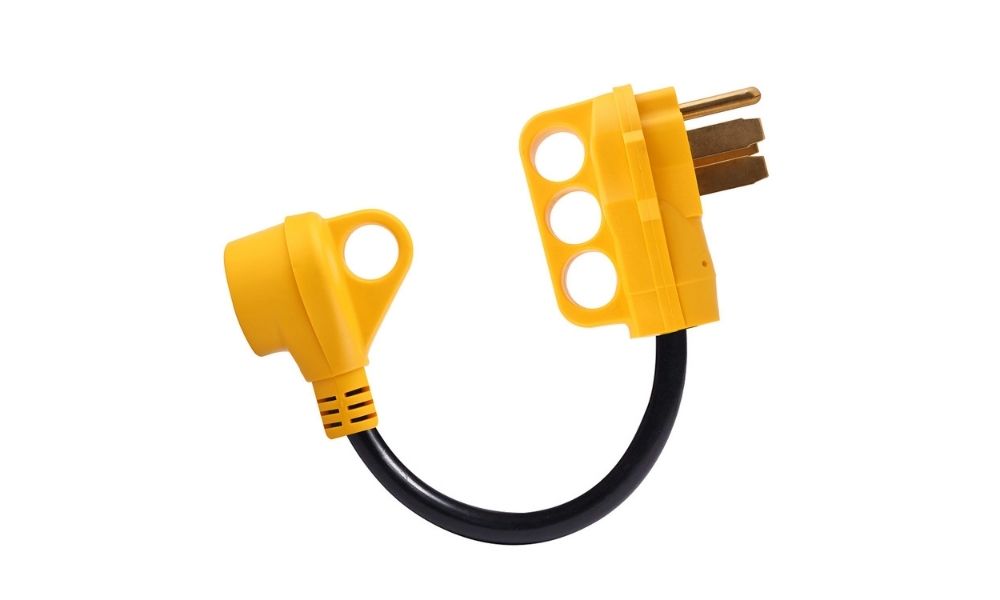
Unless you’re familiar with the pedestals of the RV park(s) you frequent, it’s always good to have the needed adapters always on hand (unless the RV park sells or rents them out, which isn’t always the case). The common RV adapters and dog bone adapters available are:
- 15A M to 30A F
- 30A M to 30A F
- 30A M to 50A F
- 50A M to 30A F
- 30A + 15A M to 50A F (like Camco Heavy Duty PowerGrip Maximizer 45A Adapter as an example). (*A = Amp, M = male, F = female)
How Do I Pick The Right Extension Cord For My RV?
To be able to pick the right extension cord for your RV, you need to make sure you get the correct cord gauge versus amperage. For RVs, it’s important to get Gauge 10 (Ultra Heavy Duty) with the amp rating needed for your RV (available in 30A and 50A). This is important because if you’re charging/powering your RV, the cord will get hot, especially if you’re plugging in for a long time. This means if you’re using a lower rated extension cord, it will most likely overheat to the point where parts will melt down and it may not even allow the circuit breaker to trip, which can then lead to a fire. One of the most popular heavy-duty outdoor RV extension cords would be the Camco (55191) 25’ 30A PowerGrip extension cord which can also come in longer lengths and would also have a 50A available.
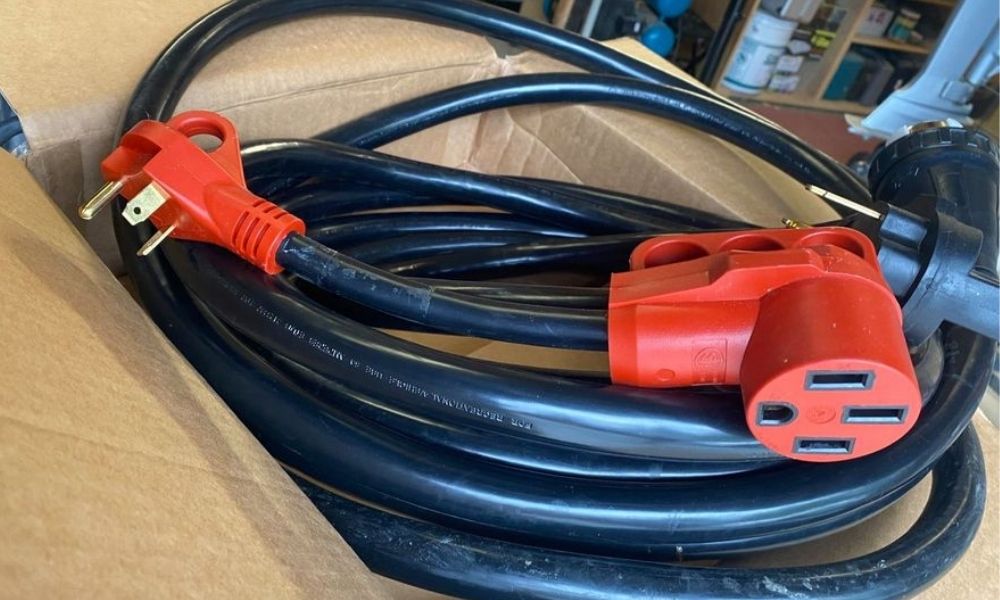
Common 50 & 30 Amp Questions
There are quite a few questions around 50 and 30-amp questions around your RV and hooking it up to your house as well as many misunderstandings around this kind of plugs
What Does A 30 Amp Plug look like?
A 30 amp plug has 3 prongs of which 2 are flat and slanted slightly, and one is round or “U” shaped. One of the flat angled prongs is Hot, which is the power, the other is the Neutral or return and the round or “U” shaped is the ground. Which is 110 volts.
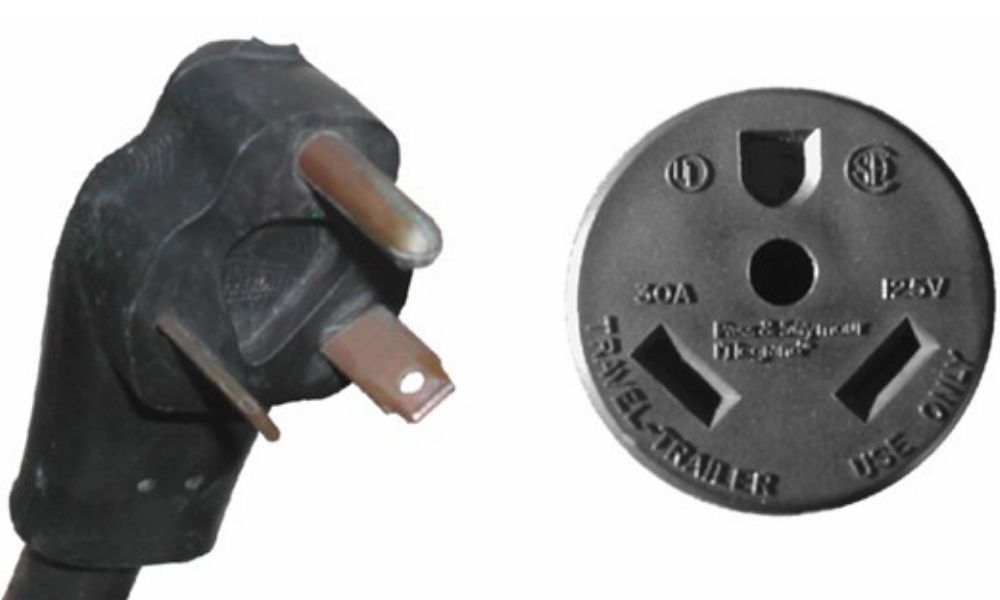
What Does A 50 Amp Plug Look Like?
A 50 am plug has 4 pings of which 3 are flat and one round or “U” shaped. The 2 on the sides are hots or Hot 1 and Hot 2, while the flat on the bottom is the Neutral. The round at the top is the ground. Each of the hots are 120 volts each X 2 for 240 volts.
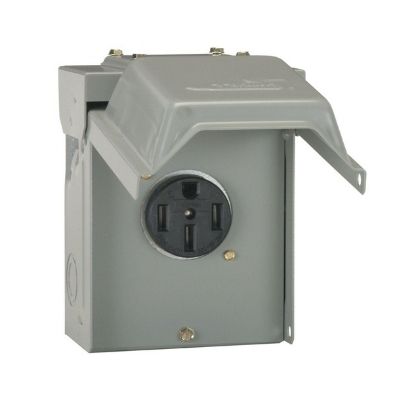
How do I know my RV is 30 amps of 50 amps?
The easiest way to know is to look at the shore hook up of your electrical on your camper or RV. If there are 3 pins, 2 of which are flat and one round, then your RV is 30 amps. If the plug has 4 pins of which 3 of them are flat and vertical and one round, then your RV is 50 amp. Here are images of each of the plugs.
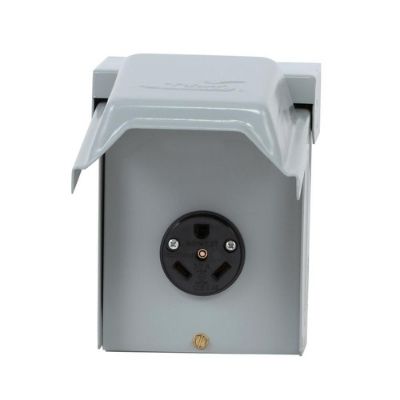

Is a 50 amp RV plug 110 or 220?
A 50 amp RV plug (male) plug fits into a 220/240 female plug or receptacle as its called. This is in North America. This is accomplished by having 2 hot prongs on the plug each providing 120 amps each. A 50 amp plug can be identified by the 4 prongs on the plugin.
Is a 30-amp RV plug 220 or 110?
Most smaller RV’s use 30 amp power, and uses 110 amps. This can be identified by the shape of the prongs. There are 2 flat angled prongs and one round or “U” shaped prong at the top. The one prong provides a hot of 110 volts, while the other is a Neutral or return of power. The Round is the ground.
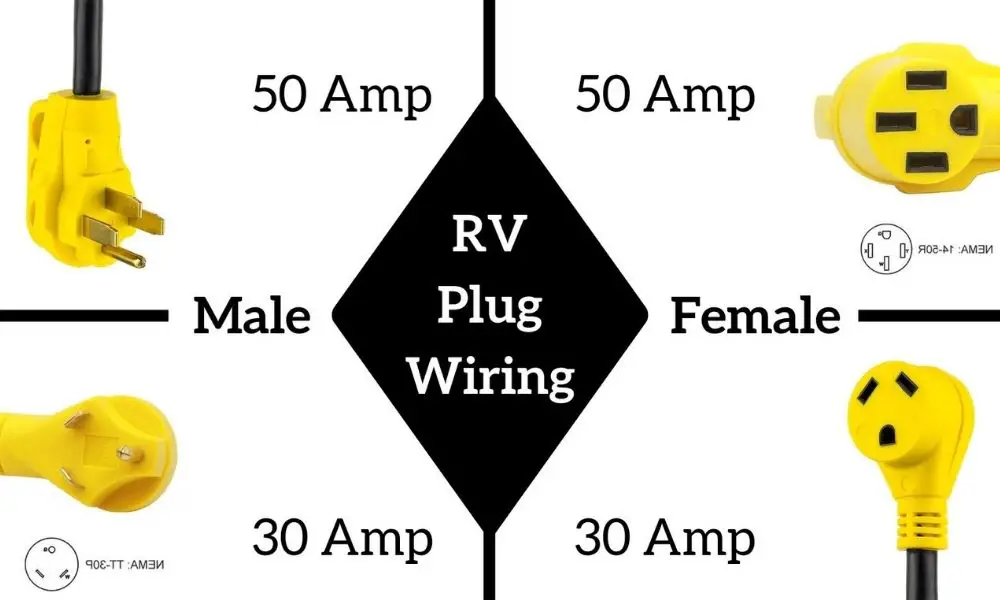
Can I Install A 50 Amp Or 30 Amp Plug On My House For My RV?
This is certainly something that can be done on your home so that you could plug your RV into your home power and use 30 amps or 50-amp power. The best way to do this is to hire a certified electrician for your area.
Dose A 30 Amp RV Outlet Need To Be GFCI?
A 30 amp RV outlet does not need to be GFCI, it simply needs to be hooked up directly to your breaker box on a 30 amp breaker, while using the proper wiring gauge for the run length.
Can I Plug My RV Into My Dryer Plug?
Although dryer electrical receptacles appear to be very similar to a 30 amp plug or 50 amp plug on your RV, do not fit. RV’s that use a 50 amp use a plug called a NEMA 14-50, while the dryer plug uses a plug called the NEMA 14-30 receptacle. If your house has an older dry receptacle, it may appear that a 30 amp RV could plug into it. However, that would not be possible as 30 amp RV’s or campers use a NEMA TT-30 plug and older style dry plugs are a NEMA 14-30.
Are Campers wired for 220?
Some campers are wired for 240 volts. If your camper uses a 50 amp plug, then it is wired for 220 V. However, other campers with a 30 amp plug are wired for 110 V. The most common campers that have 220 v are Class A motorhomes, Super C motorhomes, some Class C motorhomes, longer trailers (30 plug) and 5th wheel trailers. Class B motorhomes, smaller Class C motorhomes, smaller trailers all have a 30 amp plug so they are 110 v.
Can I Run My RV’s AC On 110 Electric Power?
Running your RV’s air conditioner on 110 house power is possible, however, you cannot run additional appliances such as your RV fridge simultaneously as the AC and there are certain steps that need to be followed or your 15 or 20 amp breaker to your house will flip. There’s more detail in this article Is it possible to run an A/C on 110 home electric?
